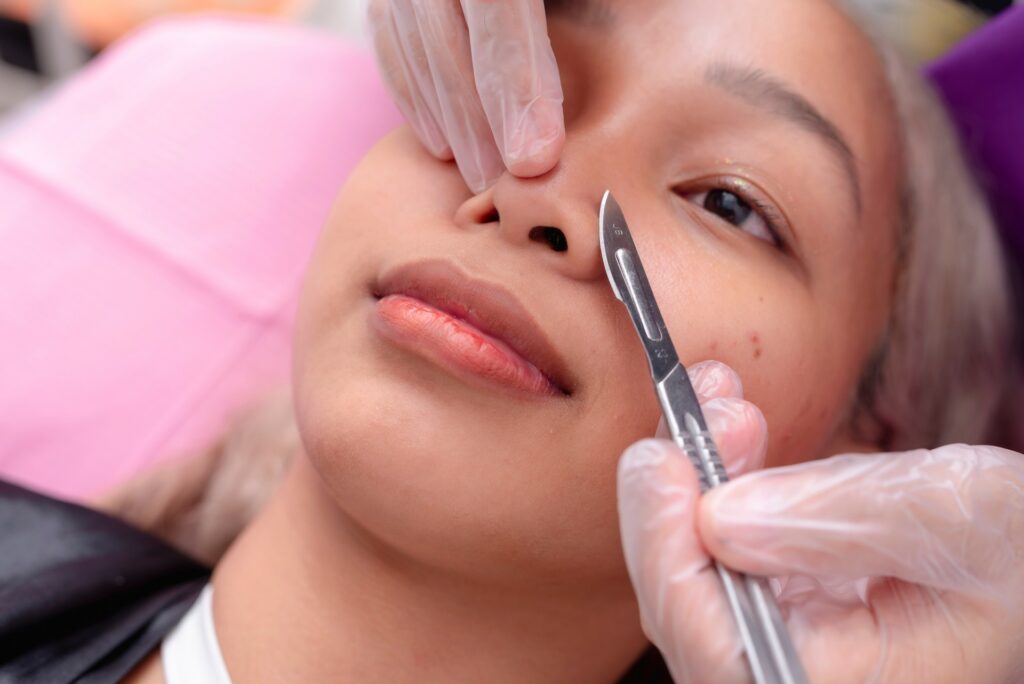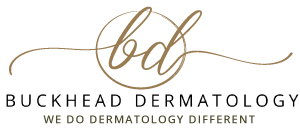Dermaplaning is Trending, But Is It For Everyone?

If you have scrolled any social media apps lately, you have likely seen at least one advertisement for sonic dermaplaning. Dermaplaning, which used to be reserved for professionally trained dermatologists, is now being offered by several companies for at-home use. However, this is a professional service, and getting it done at a dermatologist’s office will yield different results than an at-home attempt. Like getting a mani and pedi at your nail salon, an at-home job will not be the same or look the same. So, is dermaplaning for everyone? It is important to understand more about what dermaplaning is, what it is meant to provide, and who the most eligible candidates are.
Dermaplaning Basics
Dermaplaning, which is often performed during facials at skincare specialists or dermatologists’ offices, is minimally invasive. The sharp blade shaves away skin layers on the top, which removes peach fuzz and leaves the skin smooth. Regular dermaplaning can reduce acne scars over time because it slowly removes skin layers and reveals newer skin that is not damaged. Dermaplaning offers immediate and short-term results. It may be ideal for someone who wants to remove hair before applying makeup for a big holiday event.
Dermaplaning is not painful, but those with concerns may request a numbing crème be applied prior to the procedure. Professionals performing this procedure will apply a topical gel after the service to reduce redness and irritation. Any concerns about skin following dermaplaning should be addressed with a skincare specialist – if symptoms seem to worsen or last longer than a week, seek medical attention. Even if you purchased an at-home dermaplaning tool and did it yourself, and things seem to be going wrong after, reach out to a local dermatologist for an appointment. It is always better to be proactive about skin concerns; dermatologists are trained, experienced, and want to help you achieve your skincare goals.
Skin Renewal Procedures
Dermatologists typically offer more than one skin renewal and resurfacing treatment; dermaplaning only removes the top layer, whereas microdermabrasion uses a blade that exfoliates the skin by sanding away skin’s layers to leave skin smooth and reducing signs of scarring. It is best to visit your local dermatologist so that together, you can determine the best treatment to get the results you want, when you want, at a price you can afford. Those trained in the field can also suggest ways to speed up healing and prevent infection.
Dermaplaning Candidates
Removing top layers of skin has been shown to help with some acne scarring, scaly patches, dry skin, peach fuzz on the face, minimal signs of sun damage, and some fine lines. Visible improvements for some of the damage that took longer to get there do take longer to get rid of. Decades of sun damage won’t be gone after one dermaplaning treatment. Some candidates are better off visiting with a licensed dermatologist than trying dermaplaning at home, and those are those with active acne with pustules that may pop and become infected in the process. Additionally, never use a derma blade on cold sores because they can spread. Dermaplaning is not recommended for those with eczema or for use on moles, warts, skin tags, freckles, or rashes.
Dermaplaning Recovery
The skin may become red and swollen when done in a dermatology office due to the high-performing tools that are only available to licensed skincare professionals. Little white pimples may also appear, but leave these alone, and they will heal on their own. If skin scabs in any area, this is normal, and the scab will naturally fall off. Scabs should not be picked at or scraped off to speed up recovery – this will backfire and can do more damage. The skin will feel tight and look pink, which may cause some itching due to its tightness. Moisturize and wear daily sunscreen diligently because new skin is vulnerable to burns and no longer has that harsh protective layer.
Many signs of skin damage and aging are attributed to sun exposure, so any skincare professional will advise clients to stay out of the sun as much as possible. If you are working to improve the skin’s appearance, spending time in the sun, especially without proper sunscreen, will counter any positive results from dermaplaning.
If you are considering dermaplaning, microdermabrasion, or another skincare treatment to remove the top layers of your skin, contact a reputable and knowledgeable dermatologist in your area. If you are in Atlanta, contact Buckhead Dermatology for a consultation with Dr. Sherrie Straughn. She is hands down the best in the field and specializes in darker skin tones. She has the experience to help identify affordable treatments to get you the desired results – don’t settle for ordinary, and make your skin look extraordinary for the holidays! Contact Buckhead Dermatology today!
